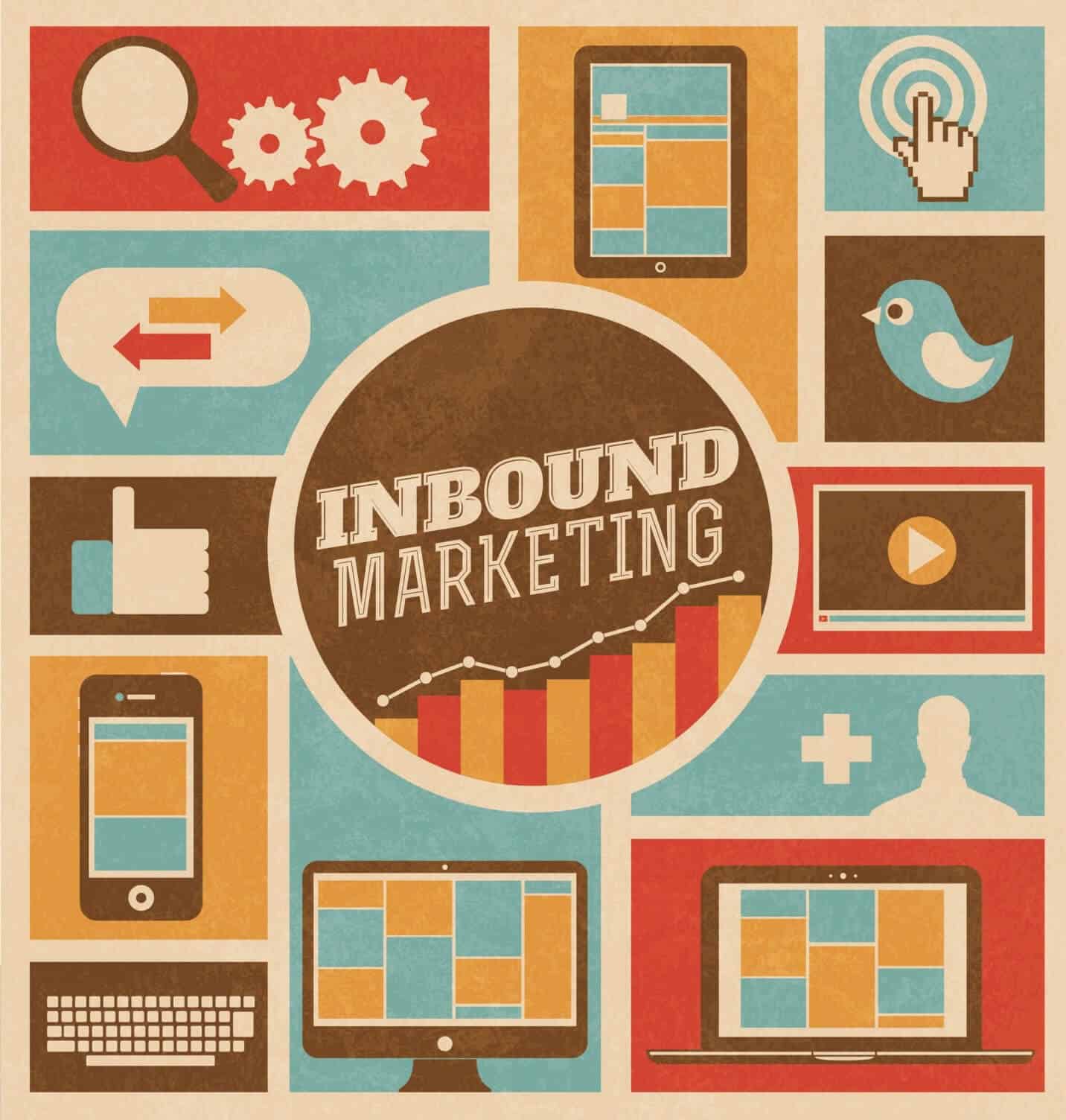
The internet has empowered customers, prompting marketers to speak no more at them, but to them.
Customers are not looking at TV spots or billboards to find out about new products anymore – they now have several alternative methods for identifying, researching, comparing, and buying products and services. They’ve gotten to know brands intimately and can make their decision of whether to purchase a certain product or not based on not only the benefits of that product, but also the company’s values and principles, and how these align with what they stand for.
From the one-way, closed-circuit, no-value-added communication that happened in the early days of advertising, marketing has transformed into a two-way dialogue where customers are no longer sought and convinced, but enticed and motivated to want the interaction themselves. Without feeling compelled to spend their hard-earned money on products shoved into their faces, customers are more likely to spend on products they feel they have the liberty of choosing, especially if, along with the merchandise, they receive something else they much appreciate: statute.
Inbound marketing strategies are focused on earning, not soliciting, a client’s attention, and most part of it is conducted through social media and valuable content, whether corporate blogs, white papers, webinars, infographics, and more. The content is not only informative and valuable in itself, but it also adds value and creates a positive relationship between consumer and the brand, making the first more likely to gain interest in the second’s products and services.
Since it’s such a popular trend nowadays, people give “inbound marketing” different meanings, but the definition I find closest to reality is the one given by TrustMedia and quoted in Business Insider, stating that:
“Inbound Marketing is a marketing strategy where businesses implement tactics to ‘get found’ by customers. Inbound Marketing involves creating and providing valuable content for your customers, promoting your remarkable content, building customer relationships, and overall ‘pulling’ the customer toward you. Inbound Marketing strategies create brand awareness, improve Search Engine Optimization, create thought leadership, develop valuable customer relationships, establish credibility, and build trustworthy reputations.”
Inbound marketing is transformational marketing, where the purchase journey is search-initiated, social-powered, and self-controlled. It stands to reason that the largest part of content marketing– by some numbers, even 90% – should be focused around customers: what they want and how they want it, and only the rest (10%) should be about the company itself.
Why Outbound Marketing Is Out

Outbound marketing has been around for ages and, while it still makes up the largest part of the marketing budgets of many companies, many of its downsides are starting to surface with the advent of inbound marketing. Some of them include:
- The marketing message is ignored. When we come across advertising we don’t ask for, we’ve grown used to ignore it. We skip TV commercials by changing channels, we automatically filter spam emails, we block internet ads with the help of a browser plugin, and we do our best to steer clear of anyone or anything trying to sell us something we don’t want to hear about right then and there. According to some surveys, almost half of direct mail is never opened, and users leave web pages they visit in the first 2 seconds because of an ad they find intrusive or irrelevant.
- It’s interruptive. The average human today is bombarded with about 2,000 outbound marketing interruptions every day. Most of them reach customers at inopportune moments, forcing them to find better and more effective ways to block them out completely (Tivo, caller ID, and Sirius satellite radio). Interruption should not be confused with disruption, an approach that interrupts behavioral patterns and prompts customers to reconsider buying decisions.
- It’s not cost-effective. Search spam – responsible for less than 10% of clicks on the web. Paid/rented email lists, throwaway press releases, contextual ads, trade show booths, forum, comment, and UGC spam, paid video reviews, and interstitial pages, they’re all costing high and yielding low. Moreover, marketers have difficulties tracking return on investment (ROI), never knowing where their strategies need improvement. The cost per lead in outbound marketing is much higher than in inbound marketing.
With outbound marketing, the goal is to raise awareness of your brand and draw customers based on incentives, hooks, promotions, etc., whereas, with inbound marketing, your target is to generate enough interest about your offerings to draw clients to you based on engagement and resonance. Outbound can only attract sales leads when active and relies exclusively on some form of paid advertising or another. Often, it results in a short period of rapid expansion, during which it only manages to create a few loyal followers that remain on long-term. Everything about outbound is defined, enclosed, limited; rather than being an ongoing process that never stops, it’s more like a series of events and campaigns whose effectiveness stops when the money’s gone.
The Inbound Recipe for Success

So what is the recipe for marketing that people love? How can marketers stop flushing money down the drain and focus precisely on what drives the customer to take action, positioning themselves to reach higher retainer rates, build meaningful relationships, and deliver a high ROI?
The recipe is not secret: traffic generation, online lead generation, conversion, and evaluation are the four pillars of inbound marketing, but it is the mixing together in just the right quantities that delivers not just a warm slop, but a hearty soup with an intoxicating aroma. Here are the main ingredients:
- Increase traffic. You can have the best products and services on the market – it will do you no good if you cannot make them known to your customers. Driving web traffic – enticing more people to come to your web properties and view your offerings – means more exposure, more opportunities to make sales, and more profit. Use the correct keywords and content to rank high on the search results pages, while providing visitors with valuable and shareable knowledge.
- Generate online leads. After researching keywords and optimizing web pages, it’s time to put it all to good use: generate actionable sales leads from the amount of traffic your content – distributed across various channels – is driving back. Compare your traffic levels with your conversion ratios and see if they match up – make sure your marketing funnel doesn’t leak. Constantly monitor online leads and conversions, making sure you know exactly where they’re coming from.
- Increase conversion rates. Now that you’ve narrowed down what your prospect audience looks like, you need a complex strategy to have your message reach the right audience. You need solid market intelligence, a regularly updated lead database, and rock solid content that holds everything together.
- Track & Measure. More important than generating traffic, leads, and conversions for your clients is finding the formula that will allow you to replicate the success again and again. Tracking & measurement does not only give you valuable insights into your customers’ mind, but it also allows you to fine-tune campaigns, update offerings, and adapt your offer to match their exact needs and desires. In a world where “our customer is our master,” that’s the only way.
10 Ideas from an Inbound Marketing Leader

You may have heard of the company at the forefront of the Inbound Marketing movement: HubSpot – an organization that has seen tremendous growth in her four years on the market (almost 4,000 customers, roughly 1,000/year). The company serves more than 8,000 companies in 56 countries and has recently attracted an investment of $32 million from large public market investment firms, including Google Ventures, Sequoia Capital, and SalesForce.com.
Some of their most recent achievements speak for themselves: “We’re generating revenue at an annualized run rate of $60 million, up more than 80% over last year, and we still see a huge market opportunity ahead of us,” said Brian Halligan, CEO and co-founder. And the reason why they’re able to pull this off? “HubSpot empowers our customers to do inbound marketing right, by attracting leads using extraordinary content and then converting them using highly personalized context,” said Dharmesh Shah, CTO and co-founder. “HubSpot customers have generated more than 56 million leads since we founded the company, which is what happens when you create marketing people love.”
For the last five years, HubSpot has inquired companies on what inbound marketing means to them and their industries. The 2013 State of Inbound Marketing Annual Report (HubSpot’s Fifth Annual Executive Review Inbound Marketing Trends and Tactics) reveals the transformations that occurred and the new opportunities for growth uncovered by small businesses. Here are the most important:
#1 Inbound marketing is here to stay, exhibiting incredible traction for an industry this new.
#2 Inbound delivers on ROI, providing higher quality leads at a lower cost.
#3 With inbound on the rise, conventional marketing is slowly dying.
#4 For greater success of inbound marketing, accurate tracking & measurement is key.
#5 Aligning with Sales has the same significance as determining the ROI of inbound.
#6 Inbound means the smart spending of resources available.
#7 Content is a central, but not standalone, component of inbound marketing.
#8 Inbound marketing is not tactic; it’s a philosophy.
#9 Now is the best time to be a customer.
#10 It’s also a great time to be an inbound marketer – if you’re up for the challenge.
So, are you?




